University of Alaska at Anchorage (UAA) library
Alaska – The Last Frontier. Called the Great Land by local natives and Indians. Referred to as Seward’s Folly by those who opposed Senator William Seward’s desire to purchase the territory from Russian in the 1860s. Known as the Land of the Midnight Sun for our 24 hour daylight in summer months. Land of Extremes. Largest state in the Union – twice as big as Texas. A state that, when admitted to the United States in 1959 as our 49th state, chose for its official motto “North to the Future.” Expansive in size, youthful in demographics, optimistic about the future.
Alaska is truly a land of extremes. Temperature ranges of over 120 degrees in Anchorage and nearly 170 degrees in Fairbanks. Soil conditions that range from bedrock to permafrost with just about everything in between. A state so large that Alaska was originally separated into four time zones. Terrain that ranges from the rainforests of southeast Alaska to the open frozen tundra plains of the North Slope. A vast area, a sparse population, with the incredible need for infrastructure. But why would someone want to pursue engineering in Alaska? Challenge and Opportunity! What more would an engineer want?
Reid Middleton’s future in Alaska started over 40 years ago in the early 1970s. At that time Reid Middleton was an established Pacific Northwest engineering firm with a reputation as a leader in waterfront engineering. Alaska, with more coastline than the rest of the continental United States combined, had a bright future given the recent discovery of large oil reserves on the North Slope. Looking North, and combining our future with that of Alaska’s, seemed like a logical fit.
Our early work in Alaska, supporting Puget Sound seafood companies with operations and facilities in Alaska, led to the opening of our Anchorage office in 1990. Initially, our focus was waterfront engineering. We completed successful projects from southeast Alaska to Anchorage to the Alaska Peninsula and the Aleutian Islands – a distance of several thousand miles – that’s how big Alaska is! A change in management in 1993 gradually led to our practice having a primary focus on structural design of buildings – the core of our practice today.
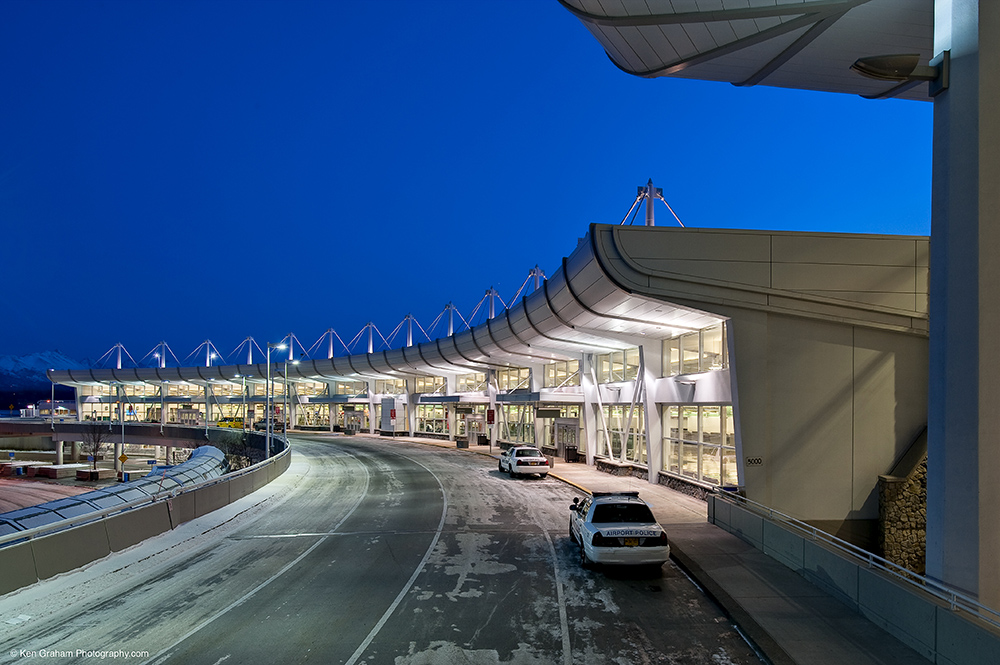
Growing a Structural Practice
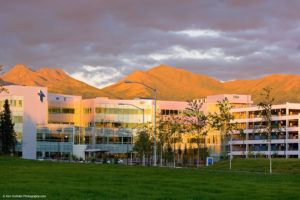
In the past 20 years, Reid Middleton’s Anchorage office has grown from a small practice, the new kids on the block, to an established, structural engineering practice with the ability to take on projects of any size. Today, we are the structural engineers for some of the larger projects constructed in Anchorage, such as the $200 million renovation and seismic upgrade to the Ted Stevens Anchorage International Airport and the Providence Alaska Southwest Campus Expansion, which is an over 700,000-square-foot expansion to Providence Hospital that included three medical office buildings, a new cancer therapy center, a child daycare facility, a 160-room hospice, two parking garages, and the conversion of a former mental health hospital into a new administration building.
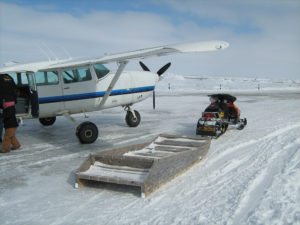
Nunapitchuk, Alaska
We are also the structural engineer of record on our fourth major project for the University of Alaska’s Anchorage (UAA) campus – the new 75,000-square-foot School of Engineering facility. Previous projects included a new 120,000-square-foot library, the Alaska Native Science and Engineering Program (ANSEP) building, and a new 65,000-square-foot Health Sciences Building. Unique about our work for UAA, two of our engineers are graduates of the engineering program at the University of Alaska; to have your degrees from a school of engineering and then to be able to design the University’s new School of Engineering building is an especially rewarding opportunity.
Working in the Bush
Even more challenging, but just as rewarding as designing large public facilities in Anchorage, is the work we do in rural Alaska. Look at a map of Alaska, and you’ll quickly notice the limited extent of our road and highway system. Most areas of Alaska are only accessible by boat or plane. This creates many logistical challenges for mobilizing materials and crews to remote project sites. In the Yukon-Kuskokwim Delta area of Alaska, what locals refer to as Y-K Delta, large areas are underlain by saturated soils and unable to support vehicles or equipment. In these areas, construction materials are frequently hauled to the site during the winter when the ground and rivers are frozen.
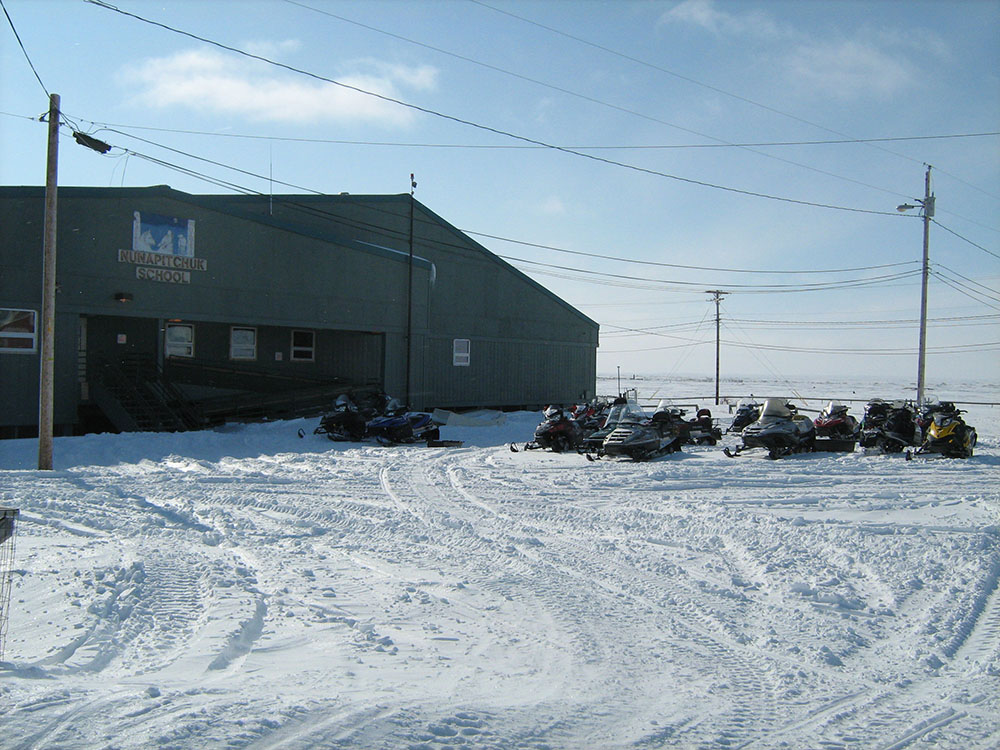
In remote areas, innovation does not mean developing state of the art, sophisticated designs. Innovation means coming up with creative ways to keep it simple. Many of the remote villages in Alaska do not have a lumber store or hardware store down the street. Many of the towns don’t even have streets, just wooden boardwalks that amble through the village. You have to make do with what you have.
Years ago, as a young engineer, I was the inspector for the construction of a school in a village in southwest Alaska. The contractor was mixing concrete in a small drum mixer. We weren’t getting our concrete strengths because the sand was saturated. The project engineer, sitting at his desk in Anchorage, told me that I needed to determine the moisture content of the sand. When I reminded him that the closest testing lab was in Anchorage, 300 miles away by plane, he simply said, “figure something out.” The town did, however, have a local trading post, with scales, and a small diner with ovens. I got permission from the owners to use their facilities after hours to dry out the sand in the diner’s ovens and weigh it on the trading post scales, and thus determined how much moisture was in the sand and how we needed to adjust our mix design. It worked. For the rest of the project, I was known by the locals as the crazy “outsider” who baked mud pies in his spare time.
Where Everybody Knows Your Name
Alaska is a special place to work for other reasons. Alaska, the largest state in the Union, has a total population of 730,000 and nearly half the population, about 300,000, resides in Anchorage. Anchorage serves as the center for the state’s relatively small A/E community – with the majority of the state’s architectural and engineering firms headquartered in Anchorage. Because of this, Alaska has a small town feel to it. Everyone knows everyone, or at least has heard of them, or knows someone who knows someone who knows them – what I call Two Degrees of Separation. Years ago someone developed the “Six Degrees of Separation from Kevin Bacon” game. In Alaska, if you can’t make a connection in two iterations, you’re not local!
Another rewarding aspect of working in Alaska is the longtime partnerships that you develop with your clients and peers. Alaska is not a place for everyone. Those who like it tend to stay. Many of my architectural clients started out over 30 years ago, as I did, “on the boards” (For you young engineers used to AutoCadd or REVIT, most of our work in the old days was hand drawn on large drafting tables, a.k.a. “working on the boards”). Thirty years later we are still working together – but in different capacities. We are now all managers or leaders in our firms.
Building Alaska’s Future
Reflecting on Reid Middleton’s history, I have enjoyed my career as an engineer in Alaska and our accomplishments and contributions to the community and the State. But what does the future hold? Alaska will always provide opportunity and challenges for architects and engineers. Given our size, remoteness, and climate extremes, this state will always be a challenging environment in which to work and design. The opportunities are still there too, but more challenging to obtain. The oil boom years of the ‘80’s are gone, and production is declining. And with over 90 percent of our state budget coming from taxation on oil production, public funding for projects is also declining.
However, the infrastructure that was constructed in the ‘80s, when I was a young engineer, and the state was flush with money, is 30 years old – an age where upgrades, renovation or replacement become necessary. Plus, new facilities are always needed. And now, with a climate that continues to show evidence of getting warmer, there are opportunities for growth in new markets that have yet to be discovered. Reid Middleton will continue building into the future with our clients, helping with new opportunities in Alaska as we also overcome challenges…for decades to come.

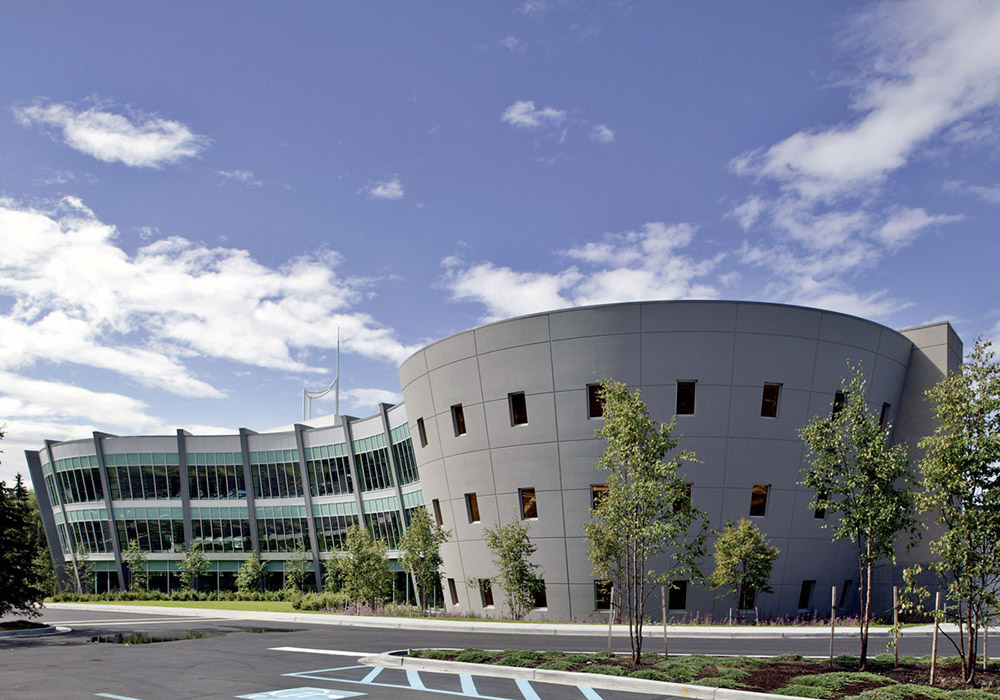

University of Alaska at Anchorage library, is a real jewel in structural engineering field